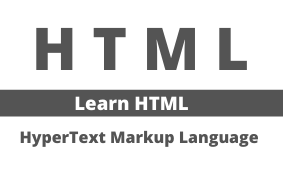HTML Elements
In HTML, element defines by a start tag and end with a closing tag, if the element contains another content.
| Start Tag | Some Element content | End Tag |
|---|---|---|
| <p> | Here is paragraph content | </p> |
| <h1> | Here is heading content | </h1> |
| <div> | Here is division content | </div> |
| <br/> | define as break tag | Self closing |
| <input/> | Here the content.... | Self closing |
There are two type of HTML element
Block-Level : It'll take full space from left to right. For Example heading tags i.e. <h1> to <h6>
Inline-Element : It'll take space as much as required. For Example paragraph tag i.e. <p>
Here are some block-level elements and Inline-elements in HTML
| Block-level | Inline-elements |
|---|---|
| <div> | <br> |
| <dt> | <a> |
| <section> | <span> |
| <address> | <acronym> |
| <table> | <big> |
| <footer> | <button> |
| <ul> | <tt> |
| <li> | <code> |
| <hr> | <em> |
| <header> | <label> |
| <form> | <map> |
| <noscript> | <kbd> |
| <nav> | <samp> |
| <ol> | <b> |
| <canvas> | <var> |
HTML Element in Tags Format
There are three types of tag format in HTML element
-
Openning Tags : For Example <meta>
-
Closing Tags : For Example <h1>-----</h6>
-
Self-closing Tags : For Example <br/><img/><input/><hr/>
Semantic Elements
An HTML element have some semantic elements which wrorks based on their tag name.
For Example
<big>Here is the largest word</big>
Non-Semantic Elements
An HTML element have also some Non-semantic elements but they wrorks totally different from their tag name.
For Example
<span></span>
<em></em>
